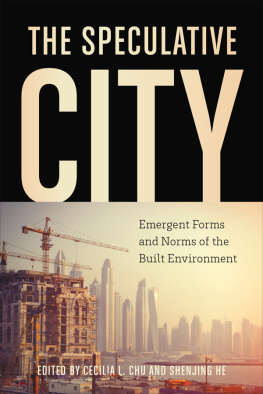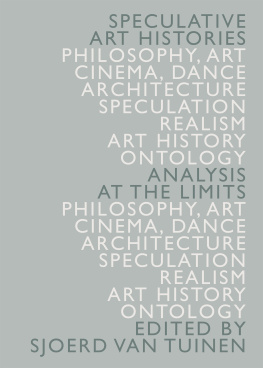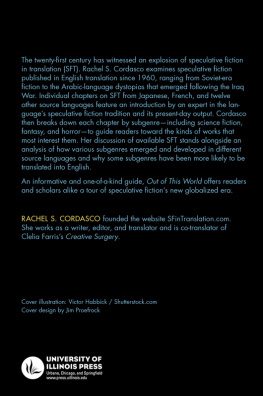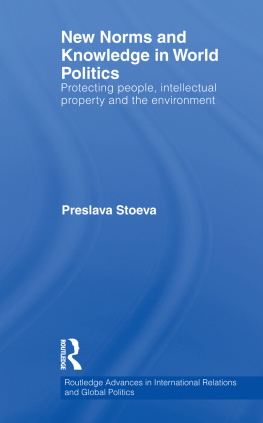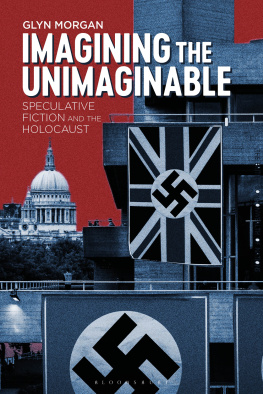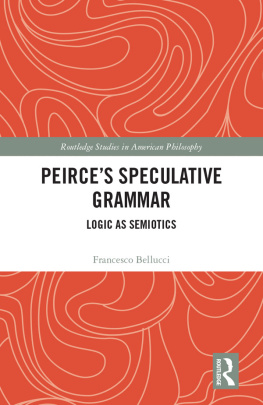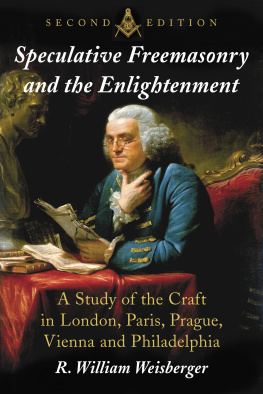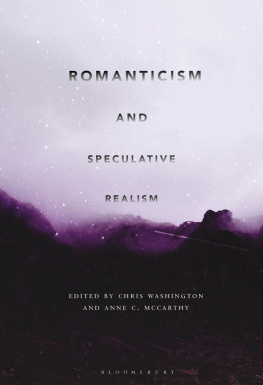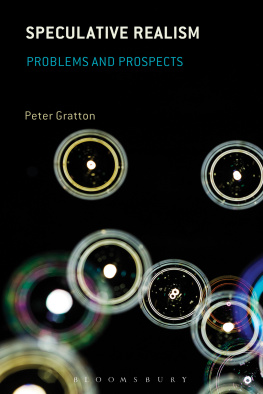Cecilia L. Chu - The Speculative City: Emergent Forms and Norms of the Built Environment
Here you can read online Cecilia L. Chu - The Speculative City: Emergent Forms and Norms of the Built Environment full text of the book (entire story) in english for free. Download pdf and epub, get meaning, cover and reviews about this ebook. year: 2022, publisher: University of Toronto Press, genre: Politics. Description of the work, (preface) as well as reviews are available. Best literature library LitArk.com created for fans of good reading and offers a wide selection of genres:
Romance novel
Science fiction
Adventure
Detective
Science
History
Home and family
Prose
Art
Politics
Computer
Non-fiction
Religion
Business
Children
Humor
Choose a favorite category and find really read worthwhile books. Enjoy immersion in the world of imagination, feel the emotions of the characters or learn something new for yourself, make an fascinating discovery.
- Book:The Speculative City: Emergent Forms and Norms of the Built Environment
- Author:
- Publisher:University of Toronto Press
- Genre:
- Year:2022
- Rating:4 / 5
- Favourites:Add to favourites
- Your mark:
- 80
- 1
- 2
- 3
- 4
- 5
The Speculative City: Emergent Forms and Norms of the Built Environment: summary, description and annotation
We offer to read an annotation, description, summary or preface (depends on what the author of the book "The Speculative City: Emergent Forms and Norms of the Built Environment" wrote himself). If you haven't found the necessary information about the book — write in the comments, we will try to find it.
By attending to the divergent forces and actors involved in property development in different geopolitical contexts, The Speculative City illustrates both the novelty and historical continuity of urbanization in the twentieth-first century.
Cecilia L. Chu: author's other books
Who wrote The Speculative City: Emergent Forms and Norms of the Built Environment? Find out the surname, the name of the author of the book and a list of all author's works by series.
The Speculative City: Emergent Forms and Norms of the Built Environment — read online for free the complete book (whole text) full work
Below is the text of the book, divided by pages. System saving the place of the last page read, allows you to conveniently read the book "The Speculative City: Emergent Forms and Norms of the Built Environment" online for free, without having to search again every time where you left off. Put a bookmark, and you can go to the page where you finished reading at any time.
Font size:
Interval:
Bookmark:

Emergent Forms and Norms of the Built Environment
Edited by Cecilia L. Chu and Shenjing He
The Speculative City explores property speculation as a key aspect of financialization and its role in reshaping the contemporary built environment. The book offers a series of case studies that encompass a range of cities whose urban fabrics have undergone significant transformation in recent years.
While the forms of these developments share many similarities, their trajectories and social outcomes were contingent upon existing planning and policy frameworks in addition to the historical roles assumed by the state and the private sector in housing and welfare provision. By paying close attention to the forces and actors involved in property development, this book underscores that the built environment has played an integral part in shaping new values and collective aspirations, while also facilitating the spread of financial logics in urban governance. The essays in this collection show that these dynamics represent a larger shift of politics and culture in the ongoing production of urban space and prompt reflections on future trajectories of finance-led property speculation.
cecilia l. chu is an associate professor in the Division of Landscape Architecture at The University of Hong Kong.
shenjing he is a professor and associate dean in the Faculty of Architecture at The University of Hong Kong.
Emergent Forms and Norms of the Built Environment
EDITED BY CECILIA L. CHU AND SHENJING HE
UNIVERSITY OF TORONTO PRESS
Toronto Buffalo London
University of Toronto Press 2022
Toronto Buffalo London
utorontopress.com
Printed in the U.S.A.
ISBN 978-1-4875-0719-0 (cloth) | ISBN 978-1-4875-2488-3 (paper) |
Library and Archives Canada Cataloguing in Publication
Title: The speculative city : emergent forms and norms of the built environment / edited by Cecilia L. Chu and Shenjing He.
Names: Chu, Cecilia L., editor. | He, Shenjing, editor.
Description: Includes bibliographical references and index.
Identifiers: Canadiana (print) 20210369116 | Canadiana (ebook) 20210369167 | ISBN 9781487524883 (paper) | ISBN 9781487507190 (cloth) | ISBN 9781487535766 (EPUB) | ISBN 9781487535759 (PDF)
Subjects: LCSH: Land speculation Case studies. | LCSH: Urban renewal Case studies. | LCGFT: Case studies.
Classification: LCC HD111.S64 2022 | DDC 333.73/13 dc23
Every effort has been made to contact copyright holders; in the event of an error or omission, please contact the publisher.
We wish to acknowledge the land on which the University of Toronto Press operates. This land is the traditional territory of the Wendat, the Anishnaabeg, the Haudenosaunee, the Mtis, and the Mississaugas of the Credit First Nation.
University of Toronto Press acknowledges the financial support of the Government of Canada, the Canada Council for the Arts, and the Ontario Arts Council, an agency of the Government of Ontario, for its publishing activities.

cecilia l. chu and shenjing he
susan s. fainstein and johannes novy
mayra mosciaro, alvaro pereira, and manuel b. aalbers
ali a. alraouf
yunpeng zhang and shenjing he
max d. woodworth
marta cataln eraso and cecilia l. chu
chris hamnett
mandy lau
chua beng huat
alan smart
The idea of The Speculative City originated from an interdisciplinary symposium at the University of Hong Kong with support from the Centre of Urban Studies and Urban Planning, Department of Urban Planning and Design, Department of Architecture, and the Faculty of Architecture. The preparation of the book was made possible with a publishing grant from the Department of Architecture at the University of Hong Kong. The authors would like to thank the three anonymous reviewers for their constructive feedback on the original manuscript, as well as Jodi Lewchuk, Breanna Muir, and Robin Studniberg for their assistance in the production of the book. Special thanks to Carolyn Zapf for her meticulous copyediting work. Finally, the authors would like to thank Marta Catalan Eraso, Calvin Liang, Yongshen Sam Liu, and Lillian Tam for their help in finalizing this project.
cecilia l. chu and shenjing he
Recent scholarship in critical urban studies has explored the contested processes of neoliberalism, drawing attention to the entrepreneurialization of urban governance that increasingly caters to the logics of the market (Harvey, 1978, 2006; Rossi, 2013; Brenner, 2014; Rossi & Vanolo, 2015). Building on David Harveys formulation of the secondary circuits of capital, numerous scholars have discussed the growing reach of financial capitalism and the concomitant increases in asset values and speculative housing practices (Aalbers, 2008; Moreno, 2012, 2014; Lapavistas, 2011). This literature highlights real estate as a central arena of financialization, abetted by the ongoing privatization of public goods and gentrification, as a key economic strategy adopted by governments around the world. The real estate and infrastructure that constitute the built environment have provided a geographical system for the redistribution of financial capital in which urban spaces are reproduced primarily as a means to fix, as well as to liquefy, financial capital (Harvey, 2006; Moreno, 2014; Rogers & Koh, 2018). These processes have hastened uneven development in both developed and developing economies, leading to increasing social inequality at the global, regional, and local scales (Pike & Pollard, 2010).
Despite the many critiques of neoliberal urbanization (especially after financial capitalism took an even more pervasive form following the 2008 global financial crisis), there have been fewer discussions of the ways in which the spatial and material processes of speculative property activities have shaped the forms of the built environment and their modes of production. This oversight can partly be explained by the long-standing divide between the disciplines of architecture and planning and those of critical geography and urban studies, with scholars tending to focus on their preferred kinds of analyses. Likewise, the immense variety of urban spaces produced through institutional mediations in different countries has also made general theorization challenging. Notwithstanding its widespread influence, David Harveys analysis of spatial production has been criticized as being overly encompassing with inadequate attention to existing institutional and cultural specificities (Robinson, 2006; Roy 2009; Brenner & Schmid, 2011). Given the deepening influence of financial capital in urban development across the globe in the twenty-first century, there is a pressing need for more detailed investigations into the evolving relationship between speculative capital accumulation and the ongoing production of urban space.
This book contributes to this investigation by exploring property speculation as a key aspect of financialization in recent years and examining its impacts on reshaping the forms and norms of the built environment. Speculation has always been a feature of global capitalism, and boom and bust cycles have been recurring patterns in the history of urban development in capitalist cities. A primary feature of speculative investment is the hope of significant and often rapid future financial gains primarily based on changes in asset prices, rather than through the slower accumulation of income over time. While the logic of speculation has shaped the spatial forms of most capitalist cities, the growing role of financial capital in fuelling global economic growth in the past several decades indicates a quantitative and qualitative shift in the way capital is being accumulated. The rise of what has been referred to as the speculative city can be seen as both a continuation of, but also a significant departure from, earlier forms of property investment, which, although including speculative elements, were tied more closely to the activities of the real economy, from which their value derived, and to the fixedness of real estate. What distinguishes financialization from these earlier patterns of accumulation is that profits accrue primarily through financial channels rather than through trade and commodity production (Krippner, 2005). In the process, financialization circumvents spatial fixity and capital illiquidity by converting site-specific property assets into transparent securities that are tradable by (often distant) investors seeking rapid gains and efficient allocation of large sums of capital (Gotham, 2006; Aalbers, 2008). At the same time, the creation of new financial instruments has greatly increased the amount of capital available to real estate developers, leading to more speculation and risk-taking.
Font size:
Interval:
Bookmark:
Similar books «The Speculative City: Emergent Forms and Norms of the Built Environment»
Look at similar books to The Speculative City: Emergent Forms and Norms of the Built Environment. We have selected literature similar in name and meaning in the hope of providing readers with more options to find new, interesting, not yet read works.
Discussion, reviews of the book The Speculative City: Emergent Forms and Norms of the Built Environment and just readers' own opinions. Leave your comments, write what you think about the work, its meaning or the main characters. Specify what exactly you liked and what you didn't like, and why you think so.

